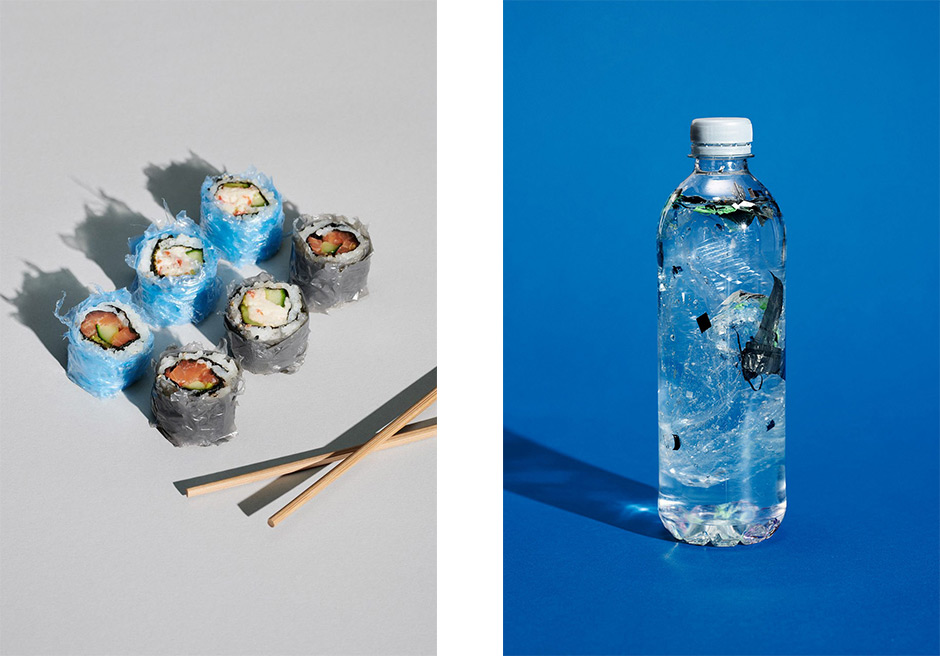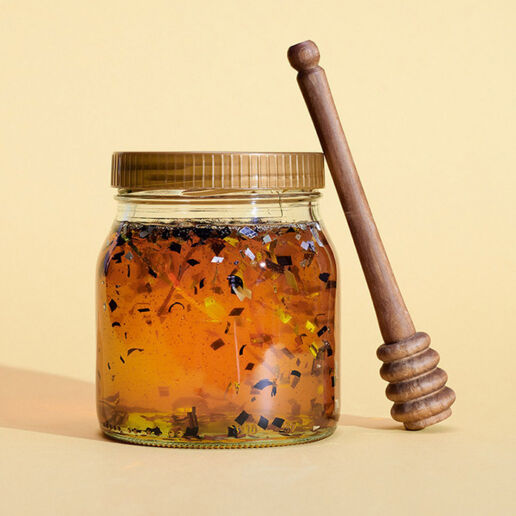THE UGLY TRUTH OF MICROPLASTICS
Sweet Sneak is a food branding and communications company based in Copenhagen. Their “Microplastic Series” was developed to raise awareness about the detrimental environmental impact of single-use plastics and packaging.
Photographer Morten Bentzon who is the creator of the series delivers this shocking reality of ours through an aesthetic perspective. From a distance, these objects are like an optical illusion. You think you are looking at an appetizing serving of sushi or a delicious honey jar but, the truth becomes apparent at a closer look. Actually, this is what the studio does – providing an aesthetic perspective to the food we love the most. They adopt a similar approach in the Microplastic Series but the gravity of the matter transpires in the details. Microplastics cannot be seen by the normal eye however, Bentzon’s lens makes it all visible. The worst thing is that the project reflects the reality.
The studio developed this project with one basic idea: reminding us of our current problems without getting ugly. The impact of food waste, unsustainable packaging practices and our consumption habits have dire consequences to nature which ultimately bring these problems to our dinner table and, often unbeknown to us, into our digestive system.
Plastic pollution is a major factor that causes irreversible damage on nature. Above all, our waste does not vanish. It just becomes smaller and smaller, hence the prefix micro. Recent data suggests that global plastic production has reached record-breaking levels with some 13 million tons of it ending up in our oceans. In other words, the main problem is not plastic itself, it is us producers and consumers. Each one of us inhabiting this planet is responsible for the release of more than 50 thousand microplastic particles a year. Our waste eventually ends up in the water we drink, the air we breathe, in living organisms and in nature.
The studio provides insight into the journey microplastics make. “Because of their tiny size, microplastics can escape water treatment filtration systems and spread out in our oceans or in other water bodies. Zooplankton, octopus, clams, oysters, fish, and seabirds can ingest microplastics. Eventually, microplastics move all the way up to the top of the food chain.” Scientists have even detected microplastics in sea salt, honey, and beer.
Regrettably, this project gains further meaning during the difficult times we are going through right now. One effect of the global pandemic lockdown has been clear evidence of our planet’s recuperation. Within weeks, global air pollution levels have fallen significantly. There are more fish in the canals of Venice. In our absence, the ecosystem is healing itself. This comes across as a sad reminder of the realities of life we tend to forget or choose to forget in our chaotic daily lives.



